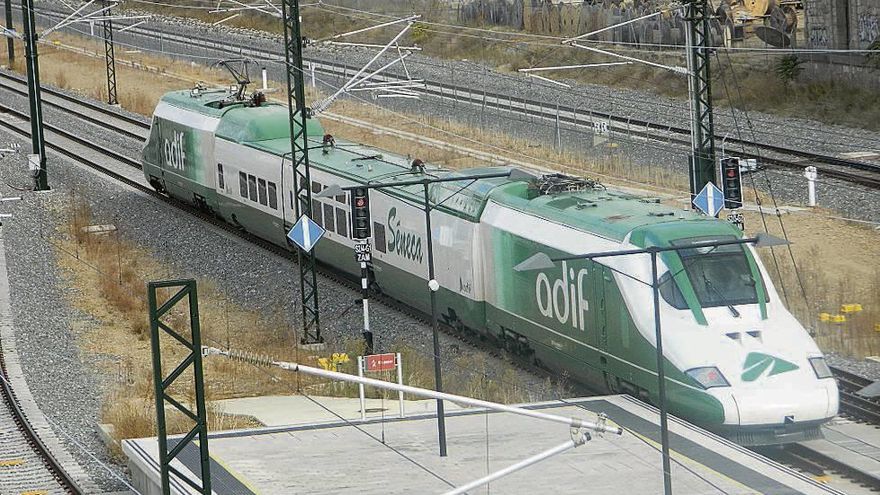“Geometric and dynamic track monitoring operations”. This is how it is called. The translation is that Adif is about to start the first traffic tests on the new high-speed railway “This is the evidence that the works are practically finished. Now the reliability will be tested”, they explain.
These tests consist of the circulation of a BT 01 laboratory vehicle (a diesel train, because there is still no electrification), “equipped with the necessary instrumentation and hardware and software to carry out the diagnosis of the quality of the infrastructure”, according to the Ministry of Transport, Mobility and Urban Agenda.
The aim is to verify parameters that influence traffic safety as well as passenger comfort, of which this vehicle provides a first approximation.
At the same time, Adif will carry out complementary actions to “guarantee the correct state of the elements that make up the railway superstructure (rail, sleepers and ballast)”. One of them will be track grinding: a train equipped with grinding wheels that will eliminate all the imperfections that could be detected. This will ensure that the train runs smoothly.
Tunnel cleaning
Another activity to be developed is ultrasound auscultation with a specialised vehicle. “The aim of this operation is to detect the possible existence of interior pores in the aluminium-thermal welds of the rail, and thus confirm the correct state of the same”.
A washing train will also be used to clean the tunnels. “This will prevent the dust in suspension generated during construction from affecting traffic”, they stress.
The ministry explains that all these checks are a continuation of the load tests and inspection of structures and braking, already carried out in June.
The final objective is to obtain the authorisation from the Spanish Railway Safety Agency (AESF).
The second part
These tests will last for weeks, and later on, other tests will have to be carried out once all the catenaries are installed and the track is electrified.
Adif highlights this step forward as evidence that the project is going ahead and that its start-up is getting closer and closer.
It should be remembered that the latest promise has been made by the Minister of Transport, Raquel Sánchez, who has assured that the high-speed train in Extremadura will be operating before the summer of 2022.
This means that there will be a high-speed train between Badajoz and Plasencia, but from the capital of Jerte onwards, the project is moving at a different pace, or even not at all.
In the section up to Talavera (Extremadura part)/Oropesa (Machega part) there are still works pending. And from there to Atocha, in the province of Toledo, there is not even a clear high-speed project yet.
This situation will force the first trains to run on the new platform to be hybrids, that is to say, to run on platforms with and without electrification, since from Plasencia onwards there will be no catenaries.
vía EL PERIÓDICO DE EXTREMADURA


